When it comes to sales and business, we all want to learn the newest techniques. Why? Because in our society, for some reason, newest equals best.
But that isn’t always true. I was surprised this book by Zig Ziglar is actually BETTER in many ways than most of the newest sales books. As they say, “old is gold”!
And right here, I’ve summarized a few of the best ideas from “Secrets of Closing the Sale.” So get ready to learn some time-tested tips than can improve your ability to sell and market your product or service.
About Zig Ziglar
Zig Ziglar (official website) was one of world’s top motivational speakers and sales trainers. For decades, he traveled the world speaking to audiences of businesspeople, sharing encouraging words and experience-based sales strategies.
🏆 1. Help Customers Win: You must believe in what you sell, honestly and enthusiastically
Zig Ziglar is probably best known for his honest and moral approach to sales. And that starts with honestly believing our customer is winning by purchasing our product or service.
If you can’t manage that, then Zig says to find a different product! Now that’s what I call integrity! (Because without this belief, we become a manipulator—trying to make people do something against their best interest.)
We start by understanding what our prospects want, then we demonstrate how our product or service will help them get what they want—better, faster, or easier!
With an honest belief in what we sell, we can be:
- 100% Enthusiastic. People are very perceptive, they know when a salesperson truly feels that a product is worth buying. With honest belief in what you sell, you will speak earnestly and enthusiastically. The sales author Brian Tracy said that sales is basically a transfer of enthusiasm from seller to buyer.
- 100% Persistent. The best salespeople are “a little hard of hearing,” Ziglar claims. When a prospect gives an objection, they don’t give up quickly. They believe the prospect simply hasn’t heard all of the benefits yet, to make the best decision.
Another well-loved motivational speaker was Jim Rohn, who also emphasized the power of determination and discipline. He wrote, “Discipline is the master key. It unlocks the door to wealth and happiness, culture and sophistication, high self-esteem and high accomplishment, and the accompanying feelings of pride, satisfaction, and success.”
Jim Rohn meant that what really creates success are small efforts, repeated every day. For example, calling just 5 more prospects every day doesn’t seem like a lot… but over a month that translates into a hundred additional prospects… and over a sales career it translates into tens of thousands of people! But that is also why it’s so dangerous to excuse our small daily failures and time-wasting, because that also multiplies over a lifetime.
Read more in 7 Strategies for Wealth & Happiness by Jim Rohn
The best professional salespeople sell a product or service that helps their prospects get what they want. This honest helpfulness is at the heart of their selling, and it allows them to speak with enthusiasm (which is often contagious) and persistence (not really “hearing” every single objection).
👍 2. Build Optimism: You should feel positive and proud to be a salesperson
Sales can be a tough profession. Many salespeople face constant rejection as part of their job. On top of that, sales doesn’t have the best reputation in the world, so it’s easy for beginners to get discouraged.
To be successful in sales, we must build our optimism or “positive mental attitude.” Here’s how:
- Feel the importance of selling. Most companies depend on their salespeople. Without sales being made, the other employees would have no work! That’s why in many companies salespeople some of the best paid employees, and even in the middle of a recession their position is secure.
- Absorb clean mental inputs. This means reading positive books and listening to uplifting speakers every day. By default, most newsfeed algorithms are designed to provide us with stories that will engage us by triggering outrage and upset. Our well being is usually not part of their algorithm.
- Build reserves of energy. To give a great sales presentation, you must have physical energy—which comes from eating nutritious food, getting enough sleep, and physical activity like walking daily. Beyond that, Ziglar strongly believes a relationship with God provides a spiritual reserve for our most difficult times.
The motivational speaker Tony Robbins echoes this message of optimism. In his book Awaken the Giant Within, he says “Achievers rarely, if ever, see a problem as permanent, while those who fail see even the smallest problems as permanent.” (This point is based on research done by Martin Seligman, the father of modern positive psychology.)
Learn more in Awaken the Giant Within by Tony Robbins
Adversity is a basic part of sales. To succeed, we must learn to remain optimistic and focused on our positive goals. So remember how valuable selling is, listen to uplifting media, and nurture your physical energy with sleep, exercise, and the right food.
🏁 3. Assume Success: Close more effectively by acting as if they’ve already decided to buy
I noticed one common theme in many of the closes shared by Ziglar; that theme is assuming the prospect has already bought your product or service.
When you have the positive expectation they will buy, then you act in a way where it is more natural for them to say yes.
On the other hand, if you don’t have this expectation, then you’ll be more hesitant, maybe you’ll even appear to be unsure about your product. Ziglar doesn’t mention it, but psychologists actually call this “the interpersonal expectancy effect, or a “self-fulfilling prophecy.” (PositivePsychology.com)
Here are some ways you can assume success in selling:
- Use positive imagination. Ziglar recommends imagining your next sales call going well, with the prospect happy to see you and sign the contract. This will help you walk into the sales call with a positive expectation and enthusiasm.
- Paint mental pictures… of them already enjoying your product or service. Like a real estate agent can ask where they will put the home office desk or the kid’s bed.
- To close, ask about product options. In other words, don’t ask IF they want the product, but ask HOW they want it. Do you like the blue color or the red color? Would you prefer the gas or hybrid engine? Would you like it delivered this week or next week?
I want to expand more on that first point. Ziglar mentions the classic self-help book Psycho-Cybernetics, which says that what holds many of us back in life is our self-image. And we can only change by holding new mental images, about how we want ourselves and our lives to look like. Then something inside of us called our Creative Mechanism will strive to make those images into a reality.
The author of that book was a plastic surgeon named Dr. Maxwell Maltz. He recommended spending 30 minutes each day relaxing and “exercising our imagination,” creating those new mental images. Maltz wrote, “Your nervous system cannot tell the difference between an imagined experience and a ‘real’ experience. In either case, it reacts automatically to information which you give to it from your forebrain.”
Read more in Psycho-Cybernetics by Dr. Maxwell Maltz
You can make the sale more easily and naturally by acting with a positive expectation that they’ve already decided to buy. Begin with imagining your next sales call going well, then paint mental pictures of them enjoying your product/service, and close by asking “which one?” they want… not if they want one.
💬 4. Agree With Objections: Never argue with prospects, but provide them with new information
Every salesperson has faced objections. Objections like: “It costs too much,” “It can’t do exactly what I want,” or “It’s too complicated to use.” How do we handle these? Well, here are 3 of Zig’s essential pointers, explained:
- Don’t argue. The worst way we can respond to objections is to begin arguing or say “no, you’re wrong!” Instead, we should acknowledge their feeling is reasonable, that others have felt the same way… BUT here is some new information they should consider.
- Use testimonials. What other people like past customers say about your product or service will always be more credible than what you say about it. Ziglar recommends building a library of testimonials, with specific ones prepared for common objections
- Soften the objection. If they object in a forceful way, you don’t need to respond right away. You can first soften their objection by rephrasing what they said in a more friendly way. Or you can repeat what they said with a question mark at the end (for the second technique, your voice tone is crucial).
So if they say “Your product will fall apart in a year!” then you can rephrase by saying “What you’re saying is that the quality of our product is one of your top concerns. Is that right?” or you can simply repeat by saying “Our product… will fall apart in a year?” This will make them justify what they said, and they will often soften the objection on their own.
I want to go back to the first point, about not arguing. The most popular book of all time on communication and social skills is How to Win Friends and Influence People by Dale Carnegie. The biggest rule in that book is not to criticize, condemn or complain towards others.
Why? Because fundamentally, we all deeply desire a feeling of importance. So if we want to influence and persuade others, we need to be very careful not to trample on their feeling of importance. And the fastest way to make that mistake is by directly arguing or telling someone they’re wrong.
(Instead, why not use questions to direct the conversation, so other people can feel as if they are arriving at a new idea on their own?)
To handle objections, begin with acknowledging their concern is reasonable. Then provide new information or testimonials. You can soften a forceful objection by rephrasing it in a nicer way or repeating what they said in a curious, questioning tone.
💎 5. Talk Value, Not Cost: Answer price objections by demonstrating the cost of NOT buying
One of the most common objections that salespeople face is related to price or cost. Prospects will often say “it’s too expensive.” What this really means is, they don’t yet see the value of the product outweighing the money they need to pay for it. As the salesperson, your whole job is to help them see the value, benefits, and features!
Here’s a quick overview of 3 ideas from Ziglar for countering price objections:
- Explain value versus cost. Usually, if you sell a higher-priced product, it is higher quality which means it will be more reliable or longer-lasting. To make this point, Ziglar tells a story of buying a ‘cheaper’ bicycle for his kid, which ended up costing more because of frequent repairs.
- Break down the price to daily amounts. If something costs a lot of money, but will last for years, then you can minimize the price by showing how much it will cost per year to own it and even per day. It’s a lot easier to justify $1 per day for a new car than $20,000.
- Show the cost of NOT buying. Can your product or service save people money? Then every day they don’t have it, they are burning cash! As the sales expert Brian Tracy wrote, “People are much more motivated to buy if they feel they are going to lose something by not buying, than they are in anticipation of the benefits they will enjoy if they do buy.”
One of the most-recommended books for salespeople is SPIN Selling by Neil Rackham. It explains a technique called “Implication Questions,” which is about asking the prospect for more details about their problem—the problem our product solves.
This increases the size of the problem in their mind, and that also increases the perceived value of a solution—which should be your product or service!
For example, a car salesperson can ask questions about how much the prospects old is costing them, in extra fuel cost, maintenance, risk of breakdowns, etc. Focusing on the problems with our old car makes us more likely to buy a newer car.
To counter price objections, you can explain how your product will cost less money over time, making it better value for money. You can also break down how must the cost will be per year or per day. If your product saves money, then show what the cost of not buying it will be.
🎁 6. Serve Generously: Top salespeople view each sale as an opportunity to win the next one
Here’s the most surprising idea (for me) from Ziglar’s book: Closing the sale is not the end, but only the beginning! The best salespeople put a lot of work into making sure their customers receive great service. Not only is it the right thing to do, but it will provide you with repeat business and referrals—and that is how to build a sales career.
Here are a few final tips for providing service:
- Do more than promised. If you do what the customer expects, they will be content. If you go beyond the promises, they will tell others. (Maybe this explains Apple’s success. Their products aren’t always the best on paper, but people love using them because they’re well-designed to be simple and reliable.)
- Offer complementary products. One saleswoman called her customers offering “accessory packages” that would complement what they just bought. Ziglar says if he’d known this before, his income selling cookware would have been 50% higher!
- Keep in constant touch. Joe Girard held ALL the records for selling cars. His secret? Sending greeting cards to ALL his past customers every month. Is this a lot of effort? Yes. Does it work? Clearly, it works amazingly well!
Editor’s Note: I have over a decade of experience with online business, and one of the best things I ever learned was to build a relationship with website visitors. And a relationship can only be built over time, so you need to have some way of following up with people who run across your business online.
Today social media offers one way to keep in touch with an audience online, but I still believe the best way is to build an email list. (WebsiteSetup.org) That provides you with a platform to reach your own audience directly, without risk of having your account shut down or algorithms changing beneath your feet.
Closing the sale is not the end, but the beginning. You build a sales career with repeat business and referrals. So always go beyond your promises, offer products that complement what you sold, and keep in touch with your past customers.
- Make a list of 5 reasons your customers win. For example, does your product save them money or does it last for years? The best salespeople have 100% belief in their product or service, which is the source of their enthusiasm and persistence.
- Write down 3 questions that assume they will buy. For example, you can ask “Should we begin this week or next?” Expecting success in the sale makes it more likely to happen.
- Contact 3 past customers for a testimonial. It doesn’t hurt to ask, right? One of Ziglar’s most powerful selling tools was his “Testimonial Reserve,” which was carefully organized based based on the benefits or objections mentioned in the testimonial.

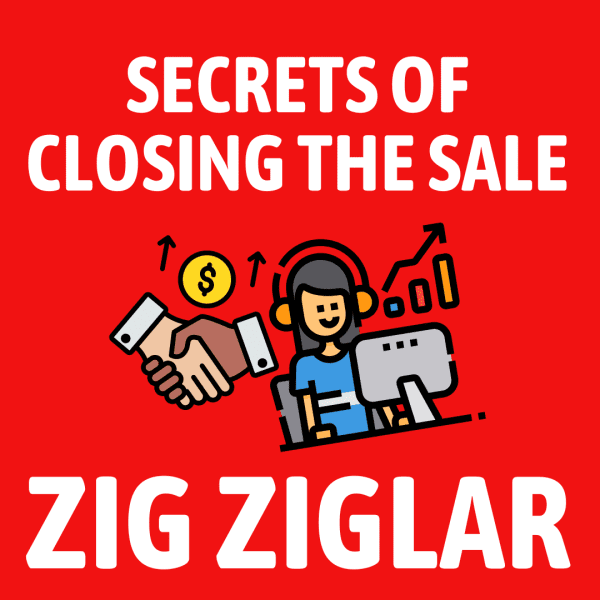
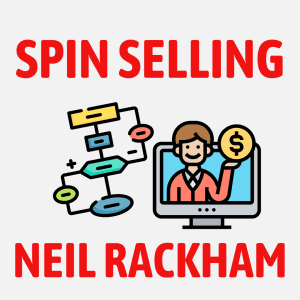

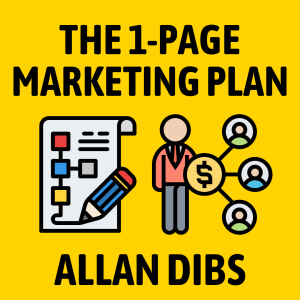



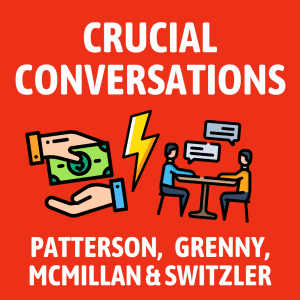
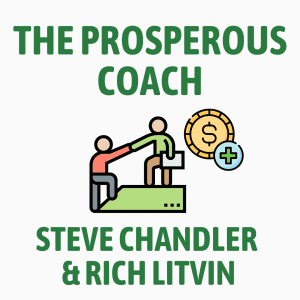
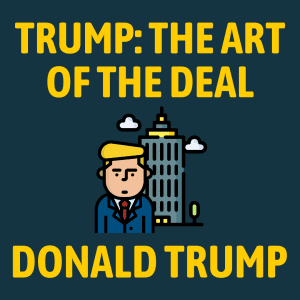
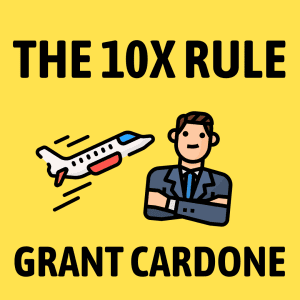












Community Notes